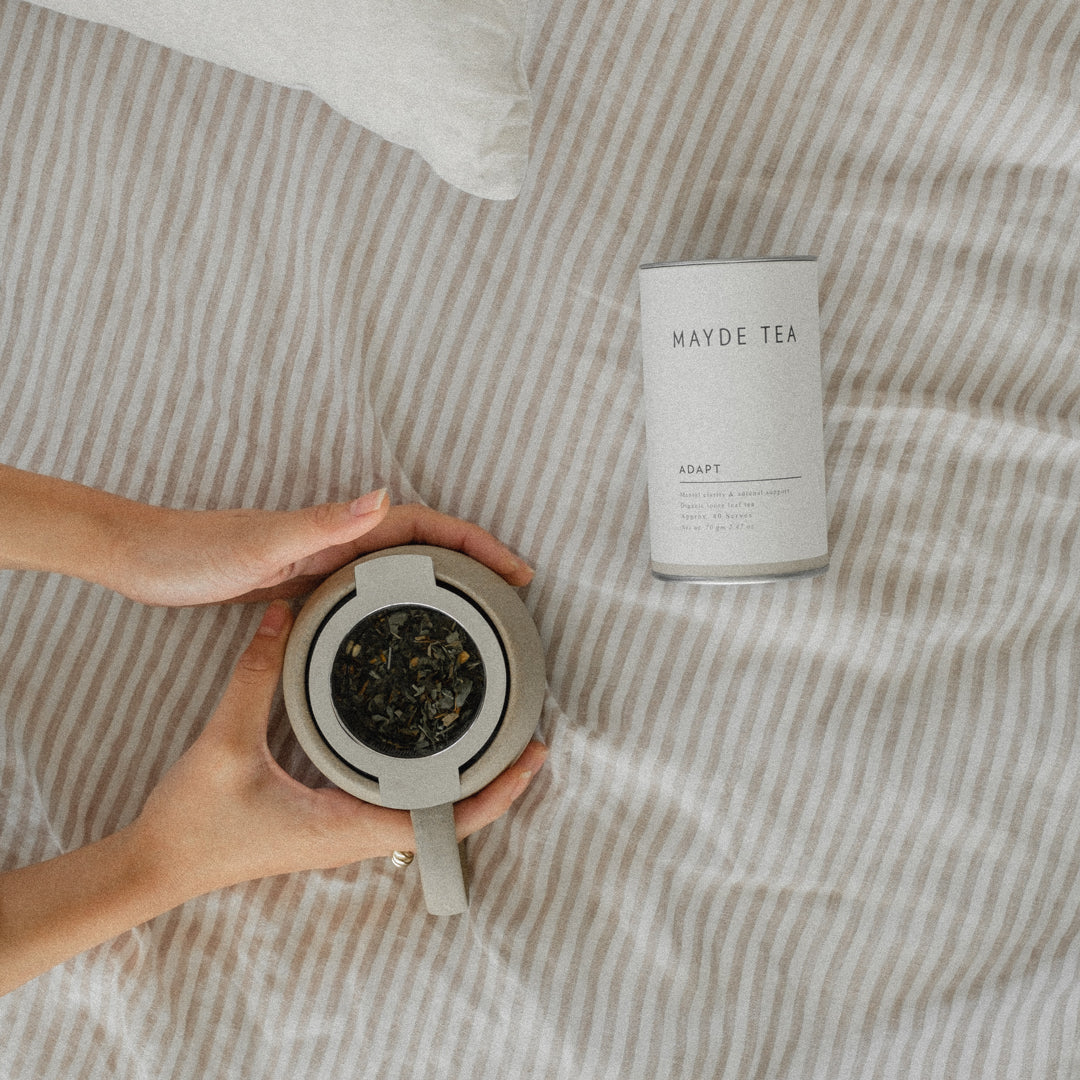An Overview of the Female Menstrual Cycle and Herbal Tips for Each Season

The female menstrual cycle is an incredible process that the body goes through with each passing month. The delicate hormonal shifts within each phase can change the way a woman feels physically and mentally, which is why it's important to understand the different phases and learn how to nourish your body throughout. Herbal teas can be used as a beautiful gentle support throughout the menstrual cycle. In this blog, we will be breakdown the different phases and the best herbal teas to sip on as you move into each phase.
Follicular Phase
The first phase of a woman’s menstrual cycle is known as the follicular phase, which starts day one of a period and can last up to 18 days, depending on your unique cycle. During this time, the body is preparing for ovulation by maturing the follicle which holds the egg and building the uterine lining. Estrogen levels in your body rise and it becomes the dominant hormone, leading to an increase in energy and libido levels. It is easy to push yourself too hard in this phase and not reserve any energy for the rest of your cycle, so consider adding Maca to your oats or smoothies and sipping on our Serenity blend to help calm and ground the nervous system during this phase.
Ovulatory Phase
Ovulation is when your body releases an egg from your ovaries for fertilisation and can last anywhere between 12- 24 hours. Ovulation general occurs around 14 days prior to your next bleed, however this is different for everyone which is why it is important to cycle track to understand when your most fertile day is. You can always work with a Naturopath if you need support with this. During this ovulation phase, your progesterone hormone levels increase while estrogen decreases, this shift can cause bloating and fatigue in some women if the ratio between sex hormones is out of balance. Including 3 cups of our Cleanse Tea blend a day can support you during this time by helping to metabolising excess hormones from the blood.
Luteal Phase
The third stage is known as the luteal phase where progesterone levels continue to rise and estrogen decreases in preparation for menstruation if pregnancy does not occur. Progesterone is our calming hormone helping to balance out estrogen. If there is an imbalance in the ratio between these hormones often you can experience premenstrual symptoms such as moodiness, sore breasts, digestive issues, skin breakouts and cramping. To help reduce these symptoms consider drinking our Digest Tea not only to reduce any digestive discomfort, but also to decrease any cramping and pain thanks to the antispasmodic and anti- inflammatory properties within the tea. Our Cleanse blend can help to metabolise excess hormones and reduce any symptoms of skin inflammation like acne.
Menstrual Phase
The menstrual phase is when you bleed and shed the uterine lining which can last between 3- 7 days depending on your unique cycle. This phase also marks the beginning of a new cycle and the transition back into the follicular phase.
During this period it is important for women to get plenty of rest, hydrate well and nourish their bodies with nutrient-dense foods that are easy on digestion such as broths and soups. Herbs like ginger (Zingiber officinale) or cinnamon (Cinnamomum zeylanicum) can be added to food or sipped on in teas during menstruation to help reduce inflammation through their warming, tonifying properties which can help to alleviate pain and cramps. We recommend our Energise blend to support circulation and decrease inflammation.
It is normal and natural to go through hormonal changes throughout the menstrual cycle, so it’s important to be tuning in to learn how you can best support yourself during each phase. Utilising specific herbs for each phase you are in, can help to provide natural relief from various symptoms brought on by hormonal fluctuations.


Leave a comment
This site is protected by hCaptcha and the hCaptcha Privacy Policy and Terms of Service apply.